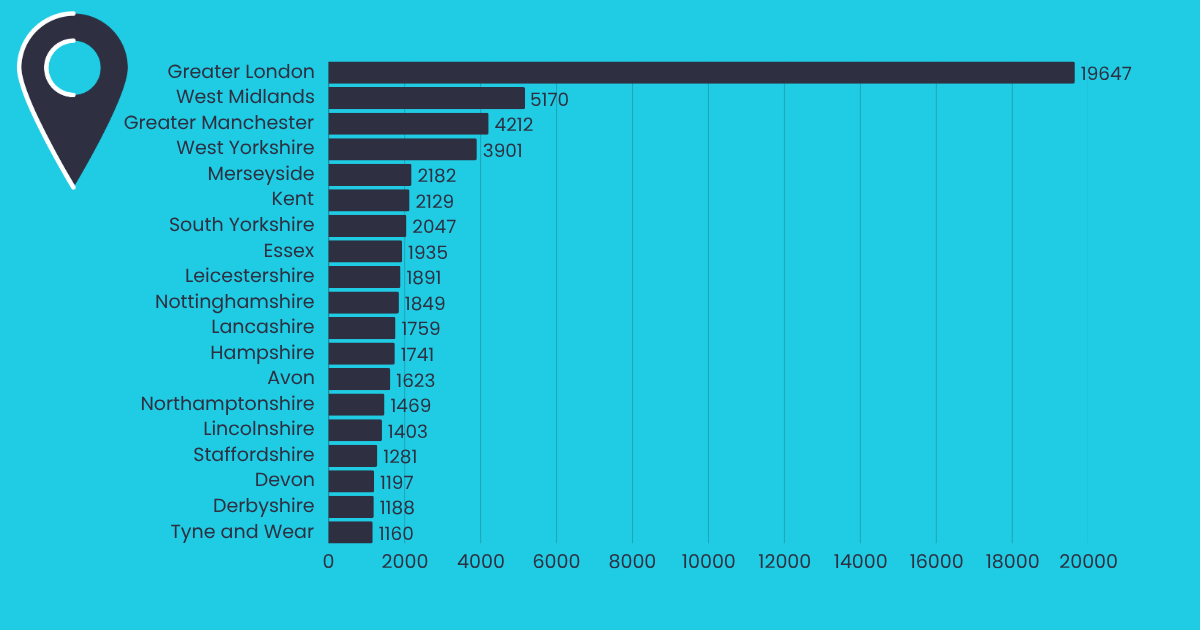
Do I Have to Pass My Theory Test Before Learning to Drive?
Find out whether you need to pass your theory test before you start learning to drive and what other requirements are needed.
Getting behind the wheel for the first time is an exciting prospect, but it also comes with a lot of responsibility. For new and inexperienced drivers, understanding the rules of the road, mastering vehicle control, and developing safe driving habits are crucial steps toward becoming a confident, skilled motorist. One important aspect that often doesn’t get enough attention until it is too late is the system of provisional licence points. Provisional licence points are a way for authorities to monitor and encourage safe driving behaviour among learner drivers and those who do not hold a full driving licence. They serve as a reminder that driving isn’t just about passing your test, it is about developing the maturity, awareness, and caution needed to stay safe on the roads for years to come.
In this blog, we’ll dive into what provisional licence points are and what patterns we can see from government data when looking at who receives the most points.

Age can potentially have a significant influence on driving performance, though it’s important to remember that the impact varies greatly among individuals and no age group, or any demographic, can be fully categorised based on stats. Both young and older drivers face unique challenges on the road, shaped by the natural changes that come with age.
For younger drivers, a common concern tends to be a lack of experience rather than physical ability. Driving requires a complex mix of skills, from quick decision-making and hazard perception to emotional control and risk assessment. Younger drivers, particularly teenagers and those in their early twenties, are still developing these skills. On the whole, young drivers may be more prone to taking risks, underestimating hazards, or becoming distracted. Their relatively limited time behind the wheel means they might not yet have encountered enough varied driving situations to build strong instinctive responses. This can sometimes translate to slower reaction times in unexpected scenarios or overconfidence in their driving capabilities.
On the other end of the scale, older drivers may experience physical and cognitive changes that affect their driving ability. Older drivers can sometimes have slower reflexes, reduced vision and hearing, and decreased flexibility or strength, all of which can potentially influence how someone handles a vehicle and their reaction time. Cognitive functions such as attention, memory, and the ability to quickly process information can also decline with age, potentially affecting how well an older driver can navigate complex or fast-changing traffic conditions. However, many older drivers compensate for these changes with decades of experience, allowing them to anticipate and avoid risks more effectively. Despite this, age-related challenges might make it more difficult to react to sudden hazards or maintain focus during longer drives.
Provisional licence points are a form of penalty specifically targeted at learner drivers, or at least those who have not yet passed their full driving test and obtained a provisional licence. When a learner driver commits certain traffic offences, points can be added to their provisional licence.
Similarly to full licence holders, those who gain too many points on a provisional licence will be penalised. For example, accumulating a certain number of points could result in the provisional licence holder being banned from taking their driving test or even having their provisional licence revoked. This means they would have to wait longer before they can qualify for a full licence, delaying their ability to drive independently.

Provisional points don’t just disappear overnight. They stay on the licence for a set period, and during this time, the learner driver needs to be especially careful to avoid further penalties. Accumulating multiple points can have a potentially significant impact, not only on the ability to take the driving test but also on future insurance premiums.
We analysed government data obtained via a Freedom of Information request, which included data on penalty points by age between November 2013-November 2024:
| Age Group | Total Points Recorded |
| 15 – 29 | 34,821 |
| 30 – 39 | 23,685 |
| 40 – 49 | 14,103 |
| 50 – 59 | 7,138 |
| 60 – 69 | 2,829 |
| 70 – 79 | 435 |
| 80 – 91 | 78 |
The data clearly shows a significant concentration of penalty points among younger provisional licence holders, especially those aged 15 to 29, who account for nearly 42% of all points with 34,821 provisional licence points.
This group has the highest incidence of provisional licence points by a wide margin. Factors that could contribute include:
This group accounts for a substantial number of points, but the incidence declines compared to the youngest drivers. Reasons may include:
Drivers over 60 represent a smaller portion of points, with the numbers dropping sharply from 60 onwards. This could be due to:
| Gender | Provisional Points |
| Male | 66,538 |
| Female | 16,551 |
| Grand Total | 83,089 |
Across the UK, males consistently account for a larger number of points at every age group:

Certain regions stand out with high volumes of provisional points, especially in younger age groups:
One of the less obvious but highly impactful consequences of provisional licence points is how they can potentially affect car insurance for new drivers. Insurance companies view drivers with provisional licence points as higher risk. This is because points indicate past risky behaviour, suggesting that the driver may be more likely to be involved in accidents or traffic violations in the future.
Provisional licence points can affect insurance, which is why it’s so important for learner drivers to drive carefully and follow the rules of the road. Avoiding penalty points will not only help keep you on the road, but it could also save you money and stress in the long run.
The government’s provisional points data reveals clear age-related patterns: younger provisional licence holders are at the greatest risk of accruing points. By understanding these trends and adopting safe driving habits, learner drivers can protect themselves from driving bans and potentially high insurance costs.
If you’re a learner driver or a parent helping a young driver, use this data as motivation to prioritise safety, knowledge, and responsibility on the road.
You will be logged out in seconds. Do you want to stay signed in?